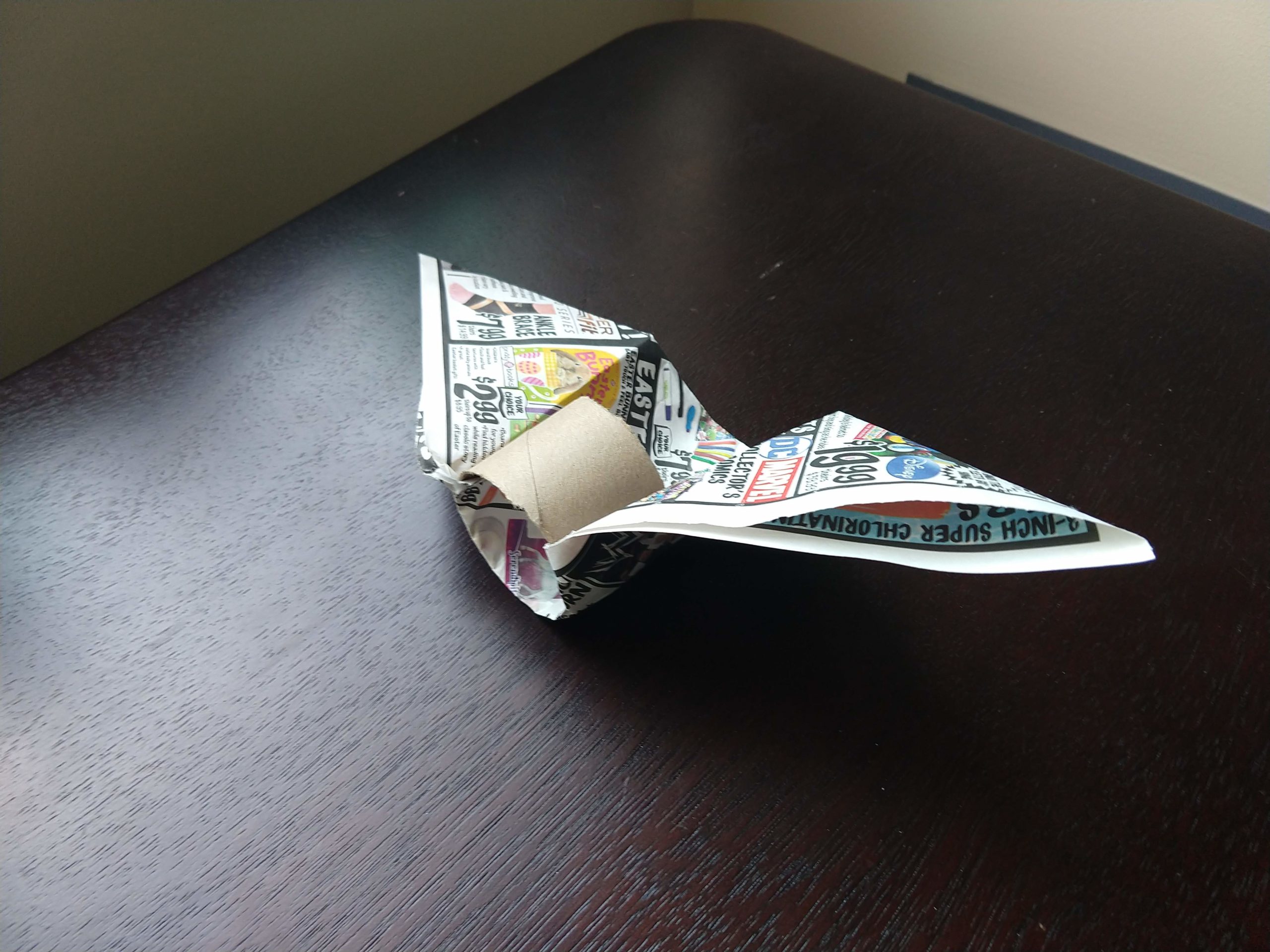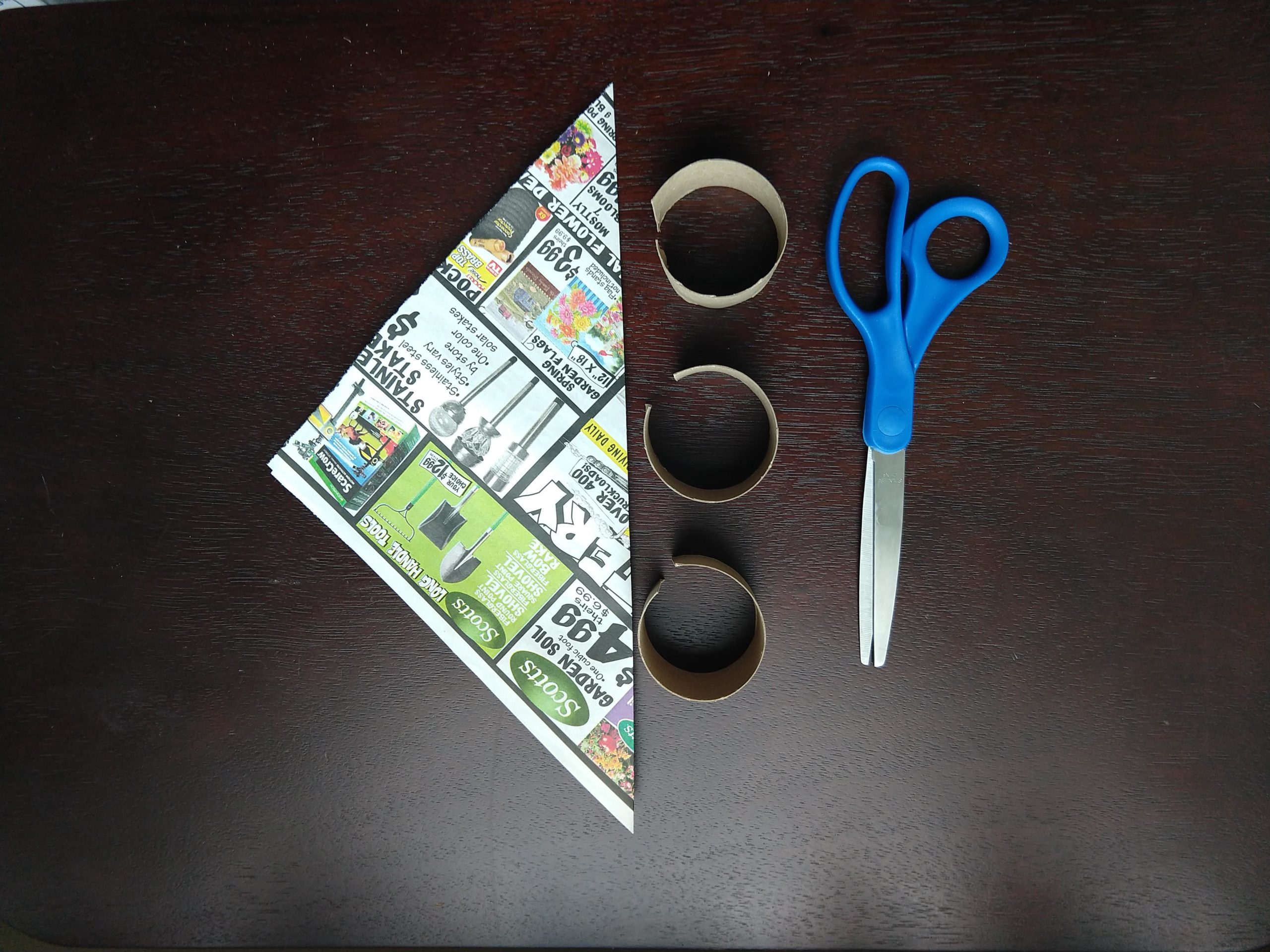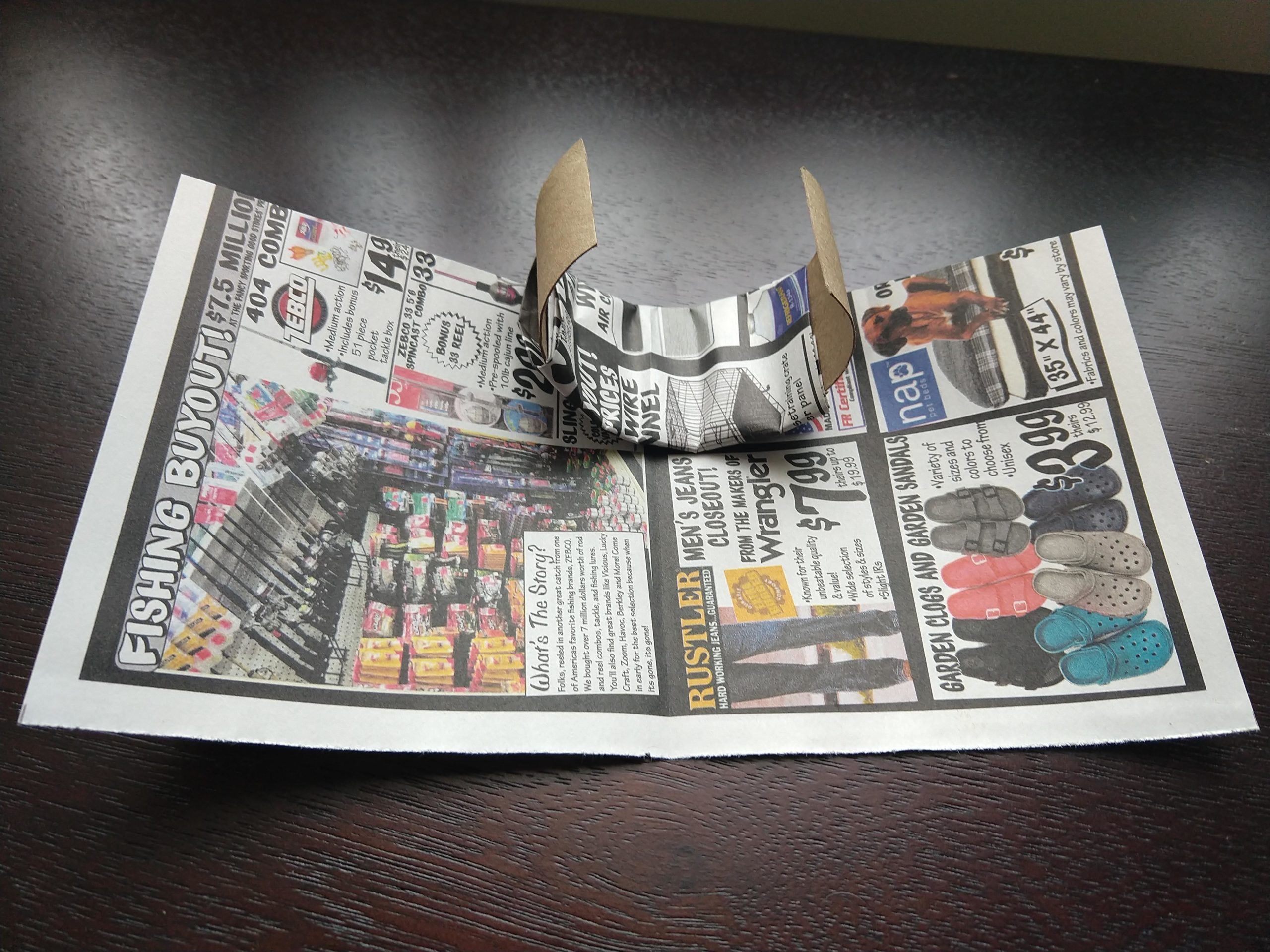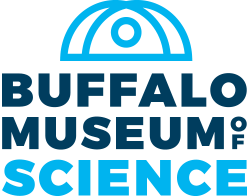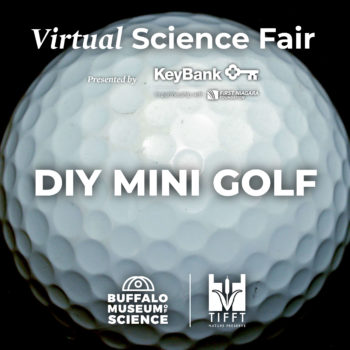Wings and Tails

Have science fun as a family! Complete activities with parental supervision.
Materials:
- Two pieces of newspaper, one in the shape of square (all sides the same length) and another in the shape of a rectangle (two long sides and two short
sides) - Scissors
- Toilet paper tube cut into three equal sections
- Ruler (optional)
- Tape (optional, but recommended)
Pointed Wing Procedure
- Cut a square of newspaper or other paper and fold it in half to make a triangle.
- Take the L-shaped angle of the paper and tuck it into one of the tubes. Fold the edge so the paper inside the tube and tape it into place.
- Shape the other two angles to create pointed wings.
- Be sure to take a picture or video to share in the Facebook comments on the Buffalo Museum of Science or Tifft Nature Preserve pages!
Broad Wing Procedure
- Use your second sheet of paper to make the broad wing glider.
- Make two cuts into the long side of the paper and fold the longer edges toward the middle of the paper, making a T shape.
- Starting from the bottom of the T shape, wrap the paper around the ring until you get to the top of the T. The ring should sit underneath the top of the T. This is your broad wing.
- Be sure to take a picture or video to share in the Facebook comments on the Buffalo Museum of Science or Tifft Nature Preserve pages!
What’s it all about?
Different birds have differently shaped wings. Specialized wing shapes help the birds maneuver in different ways.
Broad wings help eagles and vultures save energy by gliding on warm air currents without flapping. Narrow pointed wings help falcons in high-speed dives to snatch prey. Tails add to the surface area of wings creating additional lift for flight, but they can also be used like the rudder of a boat to turn left or right, or to move up or down. Wide, lowered tails help birds slow down for landings by increasing resistance.
Try It!
Try out your two gliders! Try tossing the gliders using different amounts of force – does this change how they move? Did you toss your gliders with the ring on top of the wings or underneath? What happened? Which of your gliders went further? Faster?
